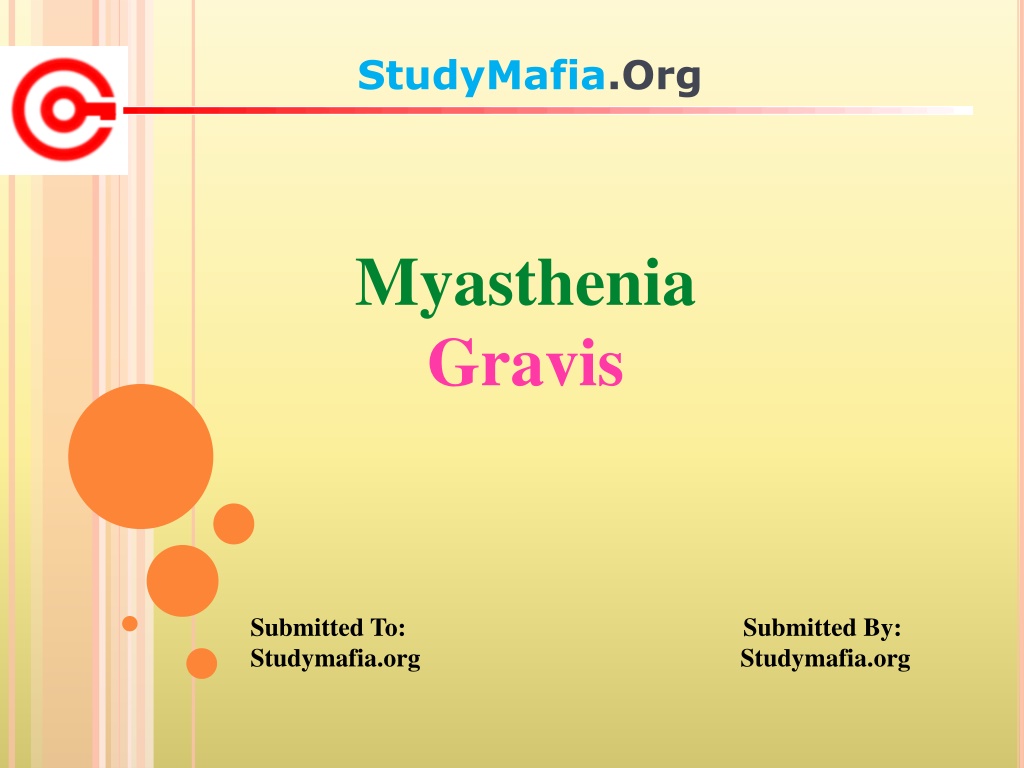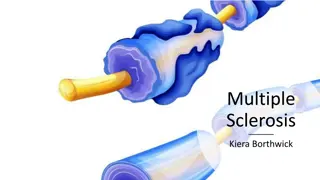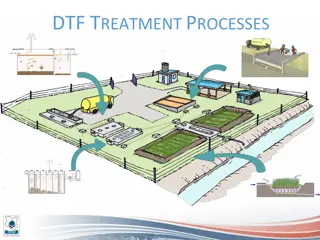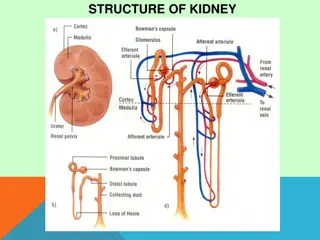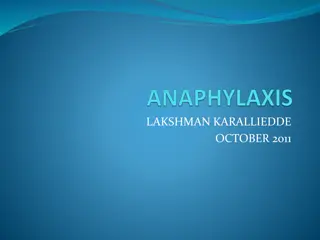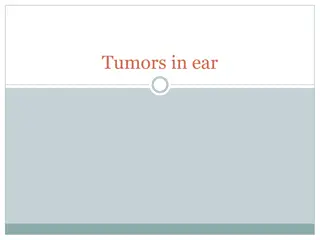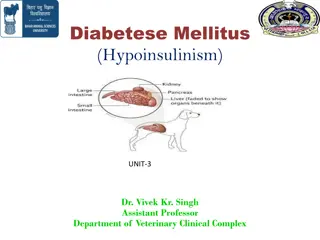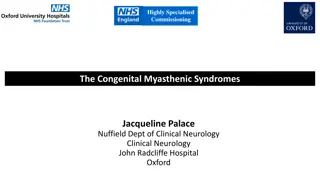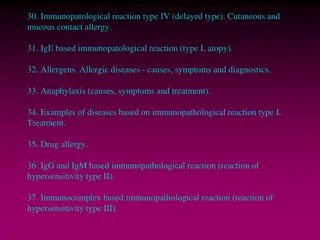Myasthenia Gravis: Symptoms, Causes, and Treatment
Myasthenia gravis is a condition characterized by muscle weakness and rapid fatigue due to communication issues between nerves and muscles. While there is no cure, treatment options are available to manage symptoms such as weakness, double vision, and difficulties with speech and swallowing. Factors like fatigue, stress, and certain medications can worsen the condition.
Download Presentation

Please find below an Image/Link to download the presentation.
The content on the website is provided AS IS for your information and personal use only. It may not be sold, licensed, or shared on other websites without obtaining consent from the author. Download presentation by click this link. If you encounter any issues during the download, it is possible that the publisher has removed the file from their server.
E N D
Presentation Transcript
StudyMafia.Org Myasthenia Gravis Submitted To: Studymafia.org Studymafia.org Submitted By:
Table Contents Definition Introduction Symptoms of Myasthenia gravis Causes of Myasthenia gravis Risk-Factors of Myasthenia gravis Complications of Myasthenia gravis Diagnosis of Myasthenia gravis Treatment of Myasthenia gravis Conclusion 2
Definition Myasthenia gravis (my-us-THEE-nee-uh GRAY-vis) is characterized by weakness and rapid fatigue of any of the muscles under your voluntary control 3
Introduction It's caused by a breakdown in the normal communication between nerves and muscles. There's no cure for myasthenia gravis, but treatment can help relieve signs and symptoms, such as weakness of arm or leg muscles, double vision, drooping eyelids, and difficulties with speech, chewing, swallowing and breathing. 4
Causes of Myasthenia gravis Antibodies: Your nerves communicate with your muscles by releasing chemicals (neurotransmitters) that fit precisely into receptor sites on the muscle cells at the nerve-muscle junction. Thymus gland: The thymus gland is a part of your immune system situated in the upper chest beneath your breastbone. Researchers believe that the thymus gland triggers or maintains the production of the antibodies that block acetylcholine. 6
Causes of Myasthenia gravis Rarely, mothers with myasthenia gravis have children who are born with myasthenia gravis (neonatal myasthenia gravis). If treated promptly, children generally recover within two months after birth. Some children are born with a rare, hereditary form of myasthenia gravis, called congenital myasthenic syndrome. 7
Risk factors of Myasthenia gravis Factors that can worsen myasthenia gravis: Fatigue Illness or infection Surgery Stress Some medications such as beta blockers, quinidine gluconate, quinidine sulfate, quinine (Qualaquin), phenytoin, certain anesthetics and some antibiotics Pregnancy Menstrual periods 8
Complications of Myasthenia gravis Myasthenic crisis: Myasthenic crisis is a life-threatening condition that occurs when the muscles that control breathing become too weak to work. Emergency treatment and mechanical assistance with breathing are needed. Medications and blood-filtering therapies help people to again breathe on their own. 9
Complications of Myasthenia gravis Thymus gland tumors: Some people with myasthenia gravis have a tumor in the thymus gland, a gland under the breastbone that is involved with the immune system. Most of these tumors, called thymomas, aren't cancerous (malignant). 10
Complications of Myasthenia gravis Underactive or overactive thyroid. The thyroid gland, which is in the neck, secretes hormones that regulate your metabolism. If your thyroid is underactive, you might have difficulties dealing with cold, weight gain and other issues. An overactive thyroid can cause difficulties dealing with heat, weight loss and other issues. Autoimmune conditions. People with myasthenia gravis might be more likely to have autoimmune conditions, such as rheumatoid arthritis or lupus. 11
Diagnosis of Myasthenia gravis Ice pack test If you have a droopy eyelid, your doctor might place a bag filled with ice on your eyelid. After two minutes, your doctor removes the bag and analyzes your droopy eyelid for signs of improvement. Blood analysis A blood test might reveal the presence of abnormal antibodies that disrupt the receptor sites where nerve impulses signal your muscles to move. 12
Diagnosis of Myasthenia gravis Repetitive nerve stimulation In this nerve conduction study, doctors attach electrodes to your skin over the muscles to be tested. Doctors send small pulses of electricity through the electrodes to measure the nerve's ability to send a signal to your muscle. Single-fiber electromyography (EMG) This test measures the electrical activity traveling between your brain and your muscle. It involves inserting a fine wire electrode through your skin and into a muscle to test a single muscle fiber. 13
Diagnosis of Myasthenia gravis Imaging Your doctor might order a CT scan or an MRI to check if there's a tumor or other abnormality in your thymus. Pulmonary function tests These tests evaluate whether your condition is affecting your breathing. 14
Treatment of Myasthenia gravis Medications: Cholinesterase inhibitors. Medications such as pyridostigmine (Mestinon, Regonal) enhance communication between nerves and muscles. These medications aren't a cure, but they can improve muscle contraction and muscle strength in some people. Possible side effects include gastrointestinal upset, diarrhea, nausea, and excessive salivation and sweating. 15
Treatment of Myasthenia gravis Intravenous therapy: Plasmapheresis (plaz-muh-fuh-REE-sis). This procedure uses a filtering process similar to dialysis. Your blood is routed through a machine that removes the antibodies that block transmission of signals from your nerve endings to your muscles' receptor sites. 16
Treatment of Myasthenia gravis Surgery: Some people with myasthenia gravis have a tumor in the thymus gland. If you have a tumor, called a thymoma, doctors will surgically remove your thymus gland (thymectomy). Even if you don't have a tumor in the thymus gland, removing the gland might improve your myasthenia gravis symptoms. 17
Conclusion Myasthenia Gravis is a very complex disease with many different signs and symptoms, which may be quite noticeable or vague. The presenting symptoms of ptosis and/or diplopia should cause the clinician to consider a work-up for MG. 19
REFERENCES Google.com Wikipedia.org Studymafia.org Slidespanda.com
THANKS TO STUDYMAFIA.ORG
